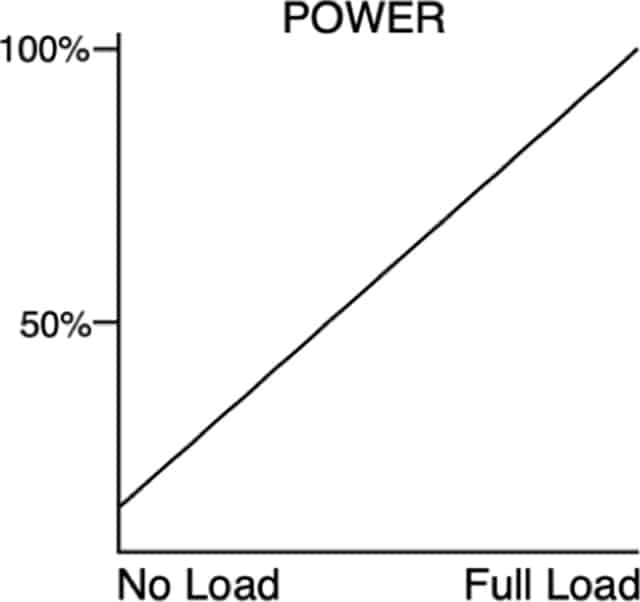Just about all industrial machines or processes are driven by an electric motor.
If the power load on the motor is monitored, valuable information is provided about what is happening inside the pump, machine, or process. Load controls measure the power load on motors and pumps, enabling optimized production processes, protection against costly pump failures, and improved preventative maintenance programs.
Power, measured in HP or watts, is calculated from the electrical connections powering a motor. This motor may be powering a pump, mixer, clarifier, blower, or other industrial process. By multiplying voltage x current x power factor (loosely described as the energy required to charge the coils in the motor), we can get an accurate view of the work the motor is doing. This gives us a signal to monitor and control motors. For pumping applications:
Measuring Power
Figure 1: Measured Power Increases as Load Increases

Measuring power requires no direct mechanical attachment to the pump or motor, and can be done in an environment free from potential manufacturing hazards, such as the motor control cabinet.

